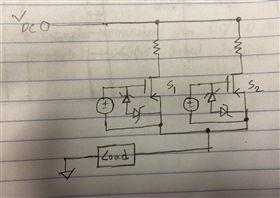Other Parts Discussed in Thread: UCC14240-Q1, SN6505B
Hi,
I want to use two ISO5852S ICs to drive two SiC MOSFETs in two parallel branches with common source (drain is not common). The MOSFETs will be used as high-side switches for my application. I have following questions regarding the bias supplies for the two MOSFETs.
1. Can I use a common power supply for the control sides of both ICs? In this scenario, both ICs will share a common control ground (GND1).
2. Can I use a common power supply for positive bias (VCC2) for both ICs? In this scenario, both ICs will share a common power ground (GND2).
3. Can I use a common power supply for negative bias (VEE2) for both ICs? In this scenario, both ICs will share a common power ground (GND2).
4. Will there be any potential problem (e.g., ground loop, shorting, etc.) that may arise related to ground reference? I am under the impression that all the power supplies are in some way are connected to earth ground and will it be a issue for ground loop/shorting?


